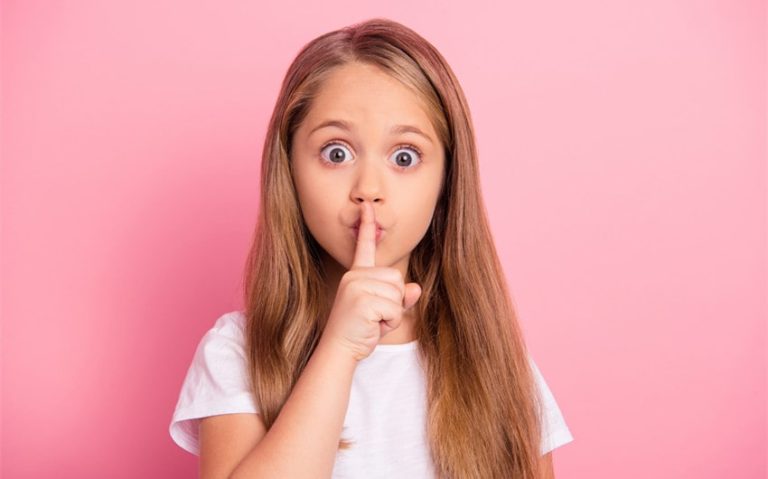Most Welcome Meaning and How to Use It Correctly
When someone thanks you, a polite response is often “You’re most welcome.” But what does this phrase really mean? The most welcome meaning is simply a warm and emphatic way to acknowledge someone’s gratitude. It’s a phrase that conveys sincerity, emphasizing that you’re genuinely happy to have helped.
Whether used in formal settings or casual conversations, understanding the meaning behind “most welcome” can help you communicate more effectively and with more warmth. In this article, we’ll explore how and when to use this phrase, so you can always respond with confidence.
What is the Meaning of “Most Welcome”?

The phrase “most welcome” is a common response to expressions of gratitude. At its core, the most welcome meaning is a polite and emphatic way to acknowledge someone’s thanks. Let’s break down the phrase to understand its different aspects:
Literal Meaning
The word “welcome” itself means to greet someone in a warm and friendly manner or to show that their presence or actions are appreciated. When combined with “most,” which is a superlative meaning “to the greatest degree,” the phrase “most welcome” essentially means that the appreciation is as strong as it can be.
So, when you say “You’re most welcome,” you’re telling the other person that their gratitude is fully accepted and that you’re truly glad to have been of help.
Contextual Meaning
The meaning of “most welcome” can vary slightly depending on the context in which it is used. In formal situations, it can come across as highly polite and respectful, emphasizing the sincerity of your response. In casual settings, while still polite, it may add a touch of formality or warmth to the interaction. It’s a phrase that works well in both personal and professional interactions, making it a versatile response.
Emotional Implication
Using the phrase “most welcome” conveys more than just acceptance of thanks—it carries an emotional implication of genuine goodwill. By choosing this phrase, you’re not only responding to someone’s gratitude but also reinforcing the positive nature of the interaction.
It shows that you value the exchange and that you’re pleased to have made a positive impact. The phrase can add a layer of warmth and sincerity that goes beyond a simple “You’re welcome.”
Is It Correct to Say “Most Welcome”?
While “You’re most welcome” is widely used, some people might wonder if it’s grammatically correct or appropriate in all situations. Let’s explore the correctness of this phrase from different angles:
Grammar and Usage
Grammatically, “You’re most welcome” is correct. The phrase is a complete sentence where “You’re” is a contraction of “You are,” and “most welcome” serves as the predicate. The word “most” functions as an intensifier, amplifying the meaning of “welcome.” This structure is perfectly standard in English, making the phrase both correct and effective in conveying a stronger sense of appreciation.
Perception and Formality
One consideration when using “most welcome” is how it might be perceived. In some situations, especially informal ones, it could be seen as slightly formal or even overly polite, depending on the relationship between the people involved.
However, this isn’t necessarily a drawback—many people appreciate the extra politeness, and in most cases, it adds a positive, respectful tone to the conversation. It’s important to gauge the setting and the preferences of the person you’re speaking with.
In formal or professional contexts, “You’re most welcome” is almost always seen as appropriate and respectful. In casual settings, you might choose to use it when you want to convey extra warmth or when the situation calls for a bit more formality.
When and How to Use “Most Welcome”

The phrase “most welcome” is a polite and versatile response to expressions of gratitude. Knowing when and how to use this phrase effectively can help you navigate various social and professional situations with grace. Below, we’ll explore different scenarios where “most welcome” is appropriate, and provide guidance on how to use it to convey the right tone and meaning.
Professional Correspondence
In emails, especially those involving clients or senior colleagues, responding with “You’re most welcome” after being thanked can enhance the professional tone of your communication. For example, if a client thanks you for providing detailed information or solving an issue, replying with “You’re most welcome, I’m glad I could assist” conveys both politeness and a commitment to service.
In meetings or formal gatherings, when someone thanks you for your input or assistance, responding with “You’re most welcome” helps reinforce a positive and respectful relationship. This phrase works particularly well in environments where maintaining a formal tone is important.
Events and Ceremonies
At formal events, such as conferences, award ceremonies, or official functions, “You’re most welcome” can be used when you are acknowledged or thanked publicly. For instance, if you are thanked for organizing an event or giving a speech, responding with “You’re most welcome” demonstrates graciousness and humility.
Casual Conversations
In everyday interactions with friends or acquaintances, “You’re most welcome” can be a warm and polite response to thanks. For example, if a friend thanks you for helping them with a task or giving them advice, responding with “You’re most welcome” adds a layer of sincerity to your acknowledgment.
While it’s more common to say “You’re welcome” in informal settings, opting for “You’re most welcome” can subtly shift the tone to be more courteous, which might be particularly appreciated in situations where you want to express genuine warmth.
Service and Volunteering Scenarios
If you’re in a service-oriented situation, such as volunteering or helping someone out in a community setting, using “You’re most welcome” when thanked can convey that you’re happy to help and that you value the interaction. For instance, if someone thanks you for volunteering your time, saying “You’re most welcome” reinforces that you’re pleased to have made a positive impact.
Responding to Help Requests
If someone thanks you for providing assistance, such as helping them with a problem, completing a task, or offering support, “You’re most welcome” reassures them that their gratitude is appreciated and that you were happy to help. For example, if a colleague thanks you for covering their shift, responding with “You’re most welcome, I’m glad I could help out” highlights your willingness to assist.
Responding to Compliments
If you receive a compliment and someone follows up with a thank you, responding with “You’re most welcome” can graciously acknowledge their appreciation. For instance, if you’re complimented on your work or contribution and thanked for it, saying “You’re most welcome” reinforces your humility and gratitude for the recognition.
Responding After Favors or Gifts
When you’ve given someone a gift or done them a favor, and they thank you, responding with “You’re most welcome” can convey that their happiness or satisfaction is your priority. It’s a way to let them know that you’re genuinely pleased to have done something nice for them.
Alternative Phrases to ‘Most Welcome’
While “You’re most welcome” is a polite and versatile phrase, there are many other ways to express the same sentiment, each bringing its own nuance and tone. Depending on the context and your relationship with the person, one of these alternatives might be more fitting or feel more natural. Here are some alternative phrases to consider:
1. “You’re Welcome”
“You’re welcome” is the most common and widely used response to expressions of gratitude. Its simplicity makes it suitable for almost any situation, whether formal or informal. The phrase is neutral and universally understood, conveying that you’re happy to help without adding any additional layers of meaning.
It’s adaptable to different tones—friendly in casual settings and polite in professional ones—which is why it’s a go-to choice for many people.
Examples:
- If a friend thanks you for helping them move, you might say, “You’re welcome!” with a smile.
- If a coworker thanks you for assisting with a project, responding with “You’re welcome” maintains a courteous tone.
2. “No Problem”
“No problem” is a casual and friendly alternative to “You’re welcome.” This phrase suggests that the assistance was easy and that it didn’t inconvenience you at all. It’s commonly used in informal settings where you want to downplay the effort involved in helping, making the other person feel comfortable and not burdensome. While “No problem” is great for casual interactions, it may be too informal for certain professional or formal situations.
Examples:
- If a friend thanks you for picking up coffee, you might respond with, “No problem!” to show that you were happy to do it.
- If a coworker thanks you for covering their shift, saying “No problem” can make the exchange feel relaxed and supportive.
3. “My Pleasure”
“My pleasure” is a slightly more formal and warm response that emphasizes your genuine enjoyment in helping. It’s often used in customer service settings or when you want to convey that assisting someone was not just acceptable but actually a positive experience for you. This phrase is especially effective in situations where you want to express that you were happy to help and that it was no trouble at all.
Examples:
- In a restaurant, if a customer thanks you for accommodating a special request, you might say, “My pleasure,” to convey that you were happy to assist.
- If a friend thanks you for hosting a dinner, responding with “My pleasure” indicates that you enjoyed having them over and were glad to help.
4. “Glad to Help”
“Glad to help” is an enthusiastic and sincere alternative that emphasizes your willingness and happiness to assist. This phrase is versatile and can be used in both personal and professional contexts, where you want to make it clear that you were eager to contribute and that it was a positive experience for you.
Examples:
- If a colleague thanks you for your input on a project, you might say, “Glad to help!” to express your enthusiasm for contributing.
- If a neighbor thanks you for helping them carry groceries, responding with “Glad to help!” shows your friendliness and willingness to assist.
5. “Anytime”
“Anytime” is a casual and open-ended response that suggests you’re always willing to help and that the person shouldn’t hesitate to ask again in the future. This phrase is particularly friendly and works well in close relationships where you want to emphasize your ongoing support.
Examples:
- If a friend thanks you for giving them a ride, saying “Anytime!” lets them know they can count on you whenever they need help.
- If a colleague frequently asks for your help and thanks you for it, responding with “Anytime!” shows your continued willingness to assist.
6. “It Was Nothing”
“It was nothing” is a humble and modest response that downplays the effort involved in helping. It’s often used to reassure the other person that what you did was no trouble at all and that you’re happy to have helped without feeling put out.
Examples:
- If a friend thanks you for lending them a book, you might say, “It was nothing!” to downplay the gesture and make them feel at ease.
- If a neighbor thanks you for watering their plants, responding with “It was nothing” reassures them that it was no inconvenience.
7. “At Your Service”
“At your service” is a formal and somewhat traditional phrase that emphasizes readiness and willingness to help. It’s often used in professional or service-oriented contexts where politeness and a high level of customer care are important.
Examples:
- A concierge might say “At your service” when a guest thanks them for arranging transportation, conveying a high level of professionalism.
- If you help organize an event and are thanked for your efforts, responding with “At your service” reflects a formal and respectful tone.
8. “Happy to Help”
“Happy to help” is a cheerful and positive response that conveys your genuine satisfaction in being able to assist. It’s a versatile phrase that works well in both professional and personal contexts, where you want to express that you were pleased to provide assistance.
Examples:
- A customer service representative might say, “Happy to help!” after resolving a customer’s issue, showing a positive attitude.
- If a family member thanks you for helping with a task, responding with “Happy to help!” shows your enthusiasm and support.






